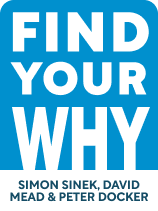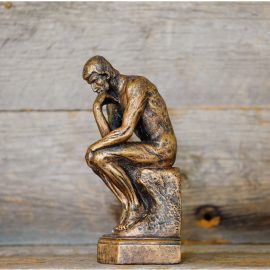

This article is an excerpt from the Shortform book guide to "Find Your Why" by Simon Sinek, David Mead, Peter Docker. Shortform has the world's best summaries and analyses of books you should be reading.
Like this article? Sign up for a free trial here .
Do you know what you stand for in life? How does knowing what you stand for lead to a more meaningful life?
Discovering your purpose, or what you stand for in life, makes you more persuasive and drives you towards making better decisions in your personal and professional life, according to Simon Sinek. He believes everyone has a life purpose and determining what you stand for will positively affect all aspects of your life.
Read on to learn Sinek’s advice for learning and living your purpose, then try a simple exercise to help find your Why.
What You Stand For Defines Your Why
According to Sinek, “finding your Why” means finding your purpose: the single core belief that inspires you to do the work you choose to do and be the kind of person you want to be in all spheres of your life. Sinek believes every individual and organization has a purpose, though not everyone has discovered theirs or put it into words. He argues that your purpose is fixed by your twenties. Some people argue that your purpose changes throughout your lifetime; however, Sinek contends that while life events can temporarily divert you from your purpose, or make you reassess it, they don’t change your purpose.
(Shortform note: Sinek’s belief that everyone has a single purpose that remains true throughout their lifetime doesn’t match findings from research on purpose. According to studies, people’s search for and engagement with their purpose evolves throughout different stages of life. During our teenage years, we take an exploratory approach to purpose that becomes more urgent as we become adults and feel the pressure to have certainty on what our purpose is. Finally, during our senior years, we again take an exploratory approach after the things that gave us purpose during adulthood, including raising a family and having a career, become past accomplishments.)
Finding Your Why: Sinek’s “Golden Circle”
Sinek created the “Golden Circle” model to help you find fulfillment by placing your day-to-day actions and your strengths in the context of your purpose, or Why. In other words, his model helps you see whether the action you’re taking aligns with your purpose and thus whether it will bring you fulfillment or distract you from your Why.
(Shortform note: In Designing Your Life, Bill Burnett and Dave Evans provide a similar tool: a Life Compass. It places your life and work philosophies side by side so you can identify where they overlap and determine whether your actions are in accord with your philosophies, or beliefs about what you do and why.)
Sinek’s model consists of three concentric circles. Each circle represents one of the core concepts in his theory.
1. The innermost circle is the Why: the purpose that orients everything you do. It’s the core belief that motivates you to get out of bed in the morning. In terms of an organization, it’s the mission you stand for and the reason you’re in business. An organization’s Why might be to provide accessible health care to its community. An individual’s Why might be to create spaces for learning.
2. The middle circle is the How: your typical methods and practices that characterize you, and which other people consider your strengths. Your How brings your Why to life. An organization’s How or method might be to always pursue the most sustainable alternatives. An individual’s How might be to forge meaningful connections.
3. The outermost circle is the What: the outputs or results you generate. It’s the tangible part of your organization or life and the easiest to identify. An organization’s What includes its products, services, policies, and strategies. An individual’s What might be their family, job, and projects.
Exercise: Lead With What You Stand For
Sinek recommends leading with your purpose or Why to create stronger connections and be more persuasive.
- Write down how you’d usually introduce yourself or your organization.
- Consider your previous response. Do you lead with your Why, How, or What (purpose, methods, or results)? How do you think this helps or harms your long-term relationships?
- Rewrite how you might introduce yourself or your organization so the focus is on your Why.

———End of Preview———
Like what you just read? Read the rest of the world's best book summary and analysis of Simon Sinek, David Mead, Peter Docker's "Find Your Why" at Shortform .
Here's what you'll find in our full Find Your Why summary :
- Simon Sinek’s steps to understanding and living your purpose and your organization’s
- How to create and write your purpose statement
- What to do after you find your Why: Determine your How






